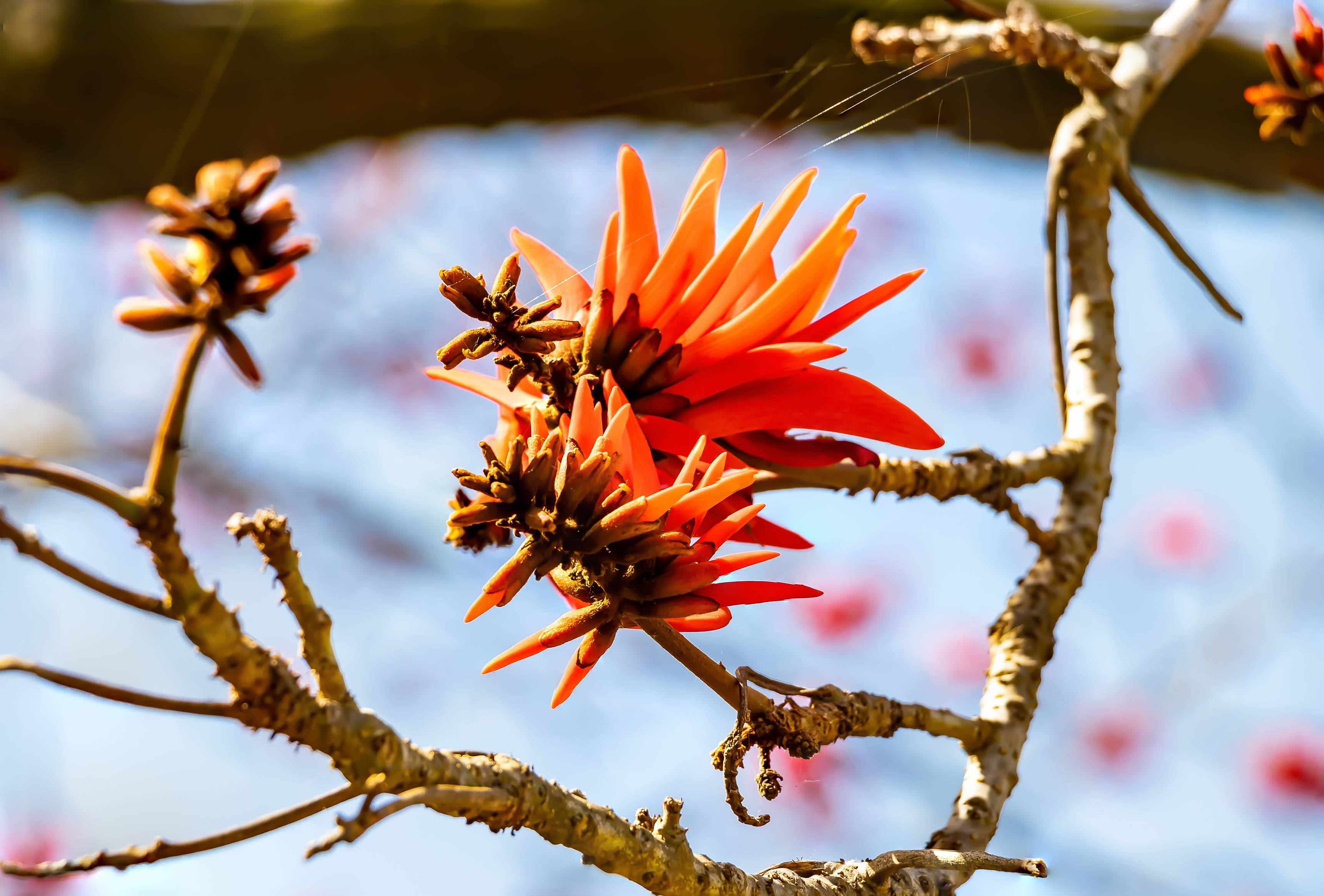EYOMSINTSI – SHOULD NATIVE PEOPLE ACCEPT THE MEANING OF ERYTHRINA CAFFRA?

The traditional isiXhosa names for months of the year poetically come from names of stars, plants, and flowers that grow or seasonal changes that happen at a given time of year in Southern Africa. The isiXhosa name for September is eyoMsintsi, coast coral tree (Erythrina caffra). The South African National Biodiversity institute published a detailed review of origins, ecology and uses of Erythrina caffra based on scientific evidence. “Erythrina caffra is a subtropical tree that occurs in the warm and frost-free to light frost coastal regions of the Eastern Cape and northern KwaZulu-Natal. The trees are found in various soil types from wet, well-drained, humus-rich soils to dry, clayey soils” (Voigt, 2006: Erythrina caffra | PlantZAfrica (sanbi.org). What does the name mean? Erythrina originates from the Greek word erythros alluding to the flower colour. Caffra is derived from the Arabic word for 'unbeliever' in reference to the plant growing outside the old trading routes. It was given the name Erythrina caffra in 1780 by Carl Thunberg who was known as the 'father' of South African botany. The southeastern part of South Africa was historically known as Kaffraria, meaning "the land of the unbelievers”.
What’s in a name? “That which we call a rose by any other name would smell as sweet.” (nosweatshakespeare.com). In their Indigenous knowledge, Xhosa and Zulu natives seem to connect astronomy (knowledge about extraterrestrial objects in space) and biology (study of living things and their vital processes that deals with all the physicochemical aspects of life). This means that the accuracy of relevance of Msintsi as an indicator of Spring (season) is not useless folklore. It has been experimentally proven to be realistic beyond the traditional beliefs, customs, and stories of a community, passed through the generations by word of mouth. Msintsi has many Erythrina relatives in the world. Sujpecies of the genus Erythrina are used in traditional medicine for the relief of pain or inflammation (Falmy et al., 2018: https://doi.org/10.1016/j.indcrop.2018.06.028). In this context, our Indigenous knowledge must be a recognised part of the modern global knowledge system that contributes to wellness. We can help rural Xhosa and Zulu folks by creating space for them to participate in natural science innovation for rural economic development.
|
Species |
Part Used |
Folk Use |
Administration |
Reference |
|
E. abyssinica |
Bark |
Inflammation, backache, pain and cramps lower belly |
Decoction, external use, extract drunk and boiled in milk. |
|
|
E. arborences |
Branch, seed and leaves |
Bone fracture and back pain |
Paste/fomentation, decoction oral, juice of leaves |
|
|
E. caffra |
Bark, leaves and roots |
Sprains, aches |
Decoction oral, eardrops and plaster |
|
|
E. caffra |
Stem bark and leaves |
Toothache and earache |
Oral infusion |
[30] |
|
E. edulis |
Bark |
Headache |
Aqueous infusion drink |
[34] |
|
E. humeana |
Bark |
Spraians |
Decoction, external use |
[26] |
|
E. senegalensis |
Bark |
Inflammation and Backache |
Decoction, external use, massage with ointment |
[22] |
|
E. variegata |
Leaves and bark |
Fever, body ache, chronic bronchitis and otalgia |
Decoction, oral |
[35] |
Professor Albert Modi, Faculty of Natural Sciences, Walter Sisulu University
